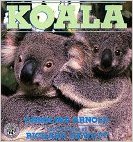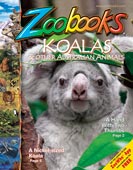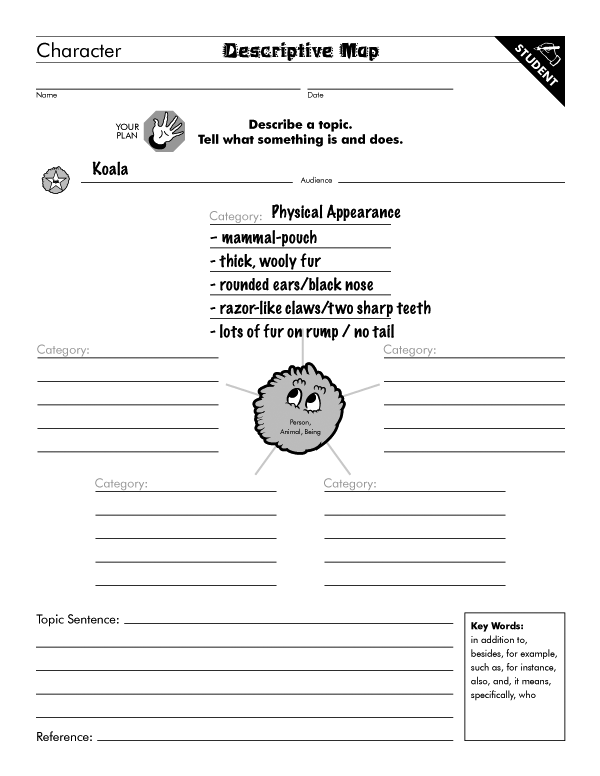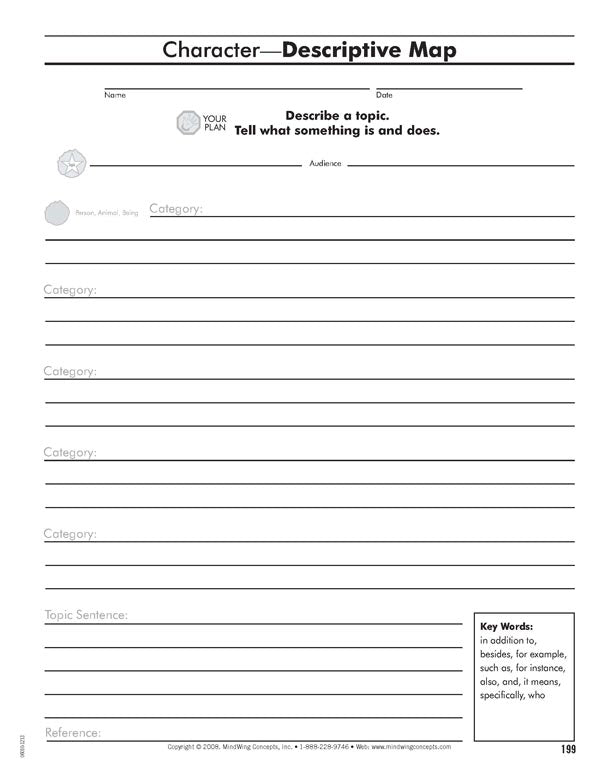Secure Checkout + FREE SHIPPING (U.S. Orders over $60)
Menu
-
- Home
-
About Us
-
The Approach
-
Linking Language & Literacy
-
Professional Learning
-
Learning Resources
-
SHOP
-
Blog
-
- About MindWing
- Our People
- Contact Us
- Your Account
- Login
-
United States (USD $)

Secure Checkout + FREE SHIPPING (U.S. Orders over $60)
Writing: Expository/Informational Descriptive Map to Paragraphs
by Sheila Zagula October 05, 2015 2 min read
We have featured past blogs showcasing the Expository/Informational Descriptive Map from our ThemeMaker manual.
- Exploring Expository Texts Using the SGM Descriptive Map (Armadillos)
- Exploring Expository Continued: Descriptive Map Activity (Cheetahs)
Today, we will look at some writing samples using the topic of Koalas and ideas to scaffold the process from using the Character Descriptive Map to paragraphs. As stated previously, any book/resource that you use may be adapted to these activities.

 We used several resources including:
We used several resources including:
We followed the same procedure as in the Armadillo and Cheetah lessons: reading short segments, making a list of facts, and placing each fact  in the correct category (physical appearance, habitat, food and eating, young, special characteristics). As your students become more skilled in descriptions, they can find facts and place items into categories themselves.
in the correct category (physical appearance, habitat, food and eating, young, special characteristics). As your students become more skilled in descriptions, they can find facts and place items into categories themselves.
Category: Physical Appearance
- mammal-pouch
- thick, wooly fur
- rounded ears/black nose
- razor-like claws/two sharp teeth
- lots of fur on rump / no tail
Some students will be able to take the information and go directly to putting the facts into sentences. This may be modeled for the students many times, with students practicing one category with a partner and then each student by him/herself.  If modeling for the students, give each student a map, elicit responses, and have each child check off the information as it is used in the paragraph. This makes the process easier to follow and keeps the work organized.
If modeling for the students, give each student a map, elicit responses, and have each child check off the information as it is used in the paragraph. This makes the process easier to follow and keeps the work organized.
Below, see a completed paragraph by a pair of second grade students using the above information. This final product was done with our technology teacher as part of this lesson.

Note how the sentence level (microstructure) could be the next task, asking students to combine sentences. On the Descriptive Character Map there is a box with Key Words. You could take the paragraph written by the students and work with it to produce the following, noting that the students themselves used the word so to expand the sentence:
Koalas are mammals and they have a pouch. Koalas have thick, wooly fur. In addition, koalas have rounded ears and a large black nose. The koalas have a keen sense of smell. Also, the koala has razor like claws and two sharp front teeth. The koala has lots of fur and fat on its rump so it can sit in a tree and sleep. Koalas do not have tails.
For some students, this would be a difficult process even with the scaffolding. Please note pages 199 and 200 from the ThemeMaker manual (shown below). The task could be broken down and modeled even further using these maps, which works very well in intervention groups.


Below see samples of the category “Young” written by a second grade student in the same class as the students above using the process presented above. To complete this project, our technology teacher had the students work on a final product, typing and inserting pictures that corresponded to the text.



Sheila Zagula
Sheila Zagula works with MindWing Concepts in product development, drawing on her expertise and talents as well as many years of implementing the Story Grammar Marker® and related materials. Her teaching career spans thirty-eight years, most recently as literacy coach in the Westfield Massachusetts Public School System. Sheila has experience as an early childhood educator, a teacher of children with special needs, and a collaborative instructor within an inclusion framework serving children in grades K-5.
Leave a comment.
Comments will be approved before showing up.
